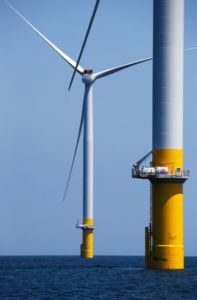
Well, well, Virginia finally has an offshore wind turbine industry. The last 253-foot blade was attached Friday to a turbine and pylon off Virginia Beach. At a cost of $300 million, the two turbines owned by Dominion Energy will provide some of the world’s most expensive electricity, but they do pave the way for a $8 billion, 180-turbine wind farm that Dominion plans to build next. The wind farm, endorsed by Virginia’s major environmental groups, will be free of CO2 emissions. It will also generate the highest-cost electricity in Dominion’s energy portfolio. Governor Ralph Northam hopes the wind farm will stimulate development of a cluster of major wind-power fabricators and service companies in Hampton Roads. We’ll see how that works out. Early indicators could be better: The two towers were assembled in Nova Scotia and transported to Virginia on a special ship.
— JAB

Leave a Reply
You must be logged in to post a comment.